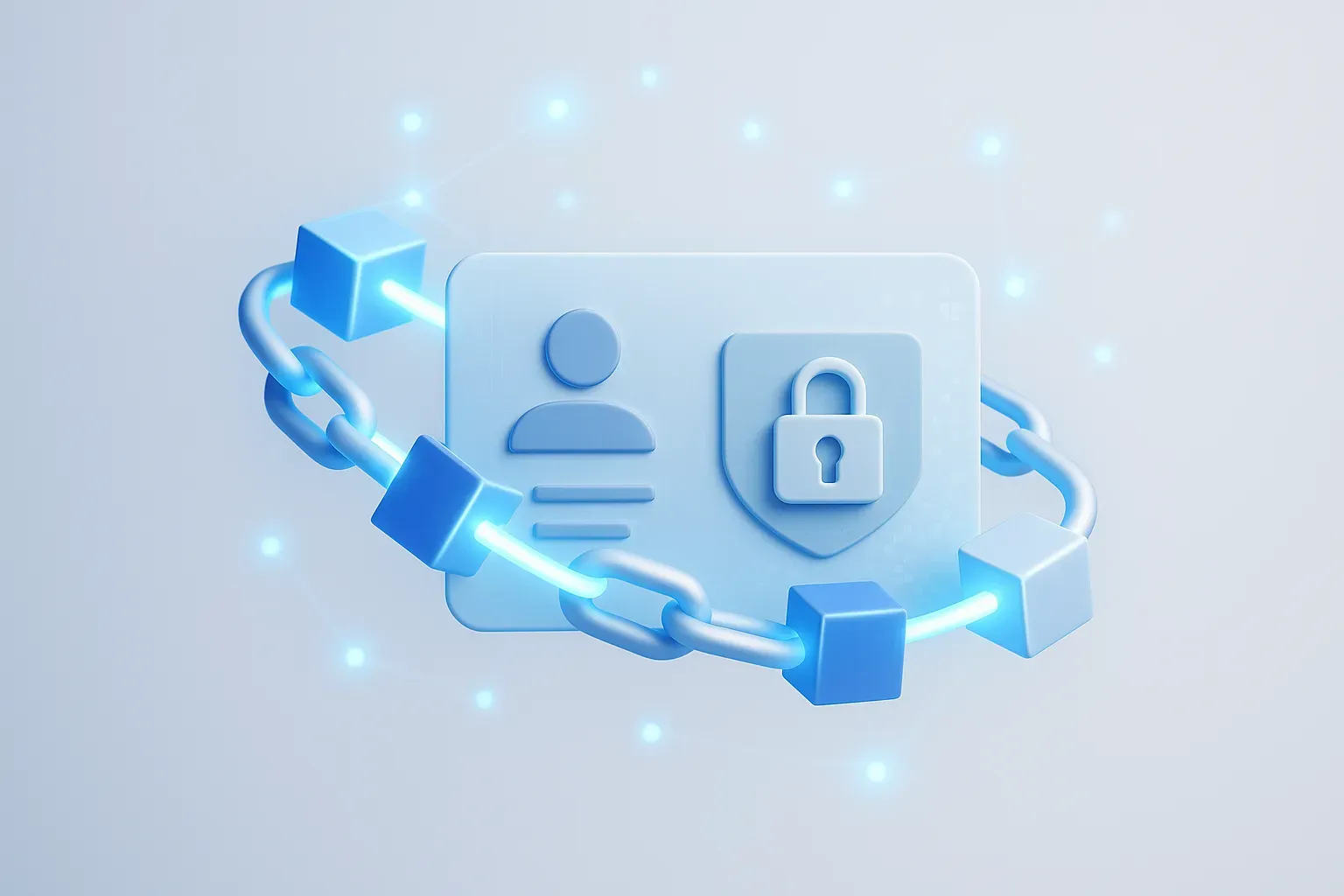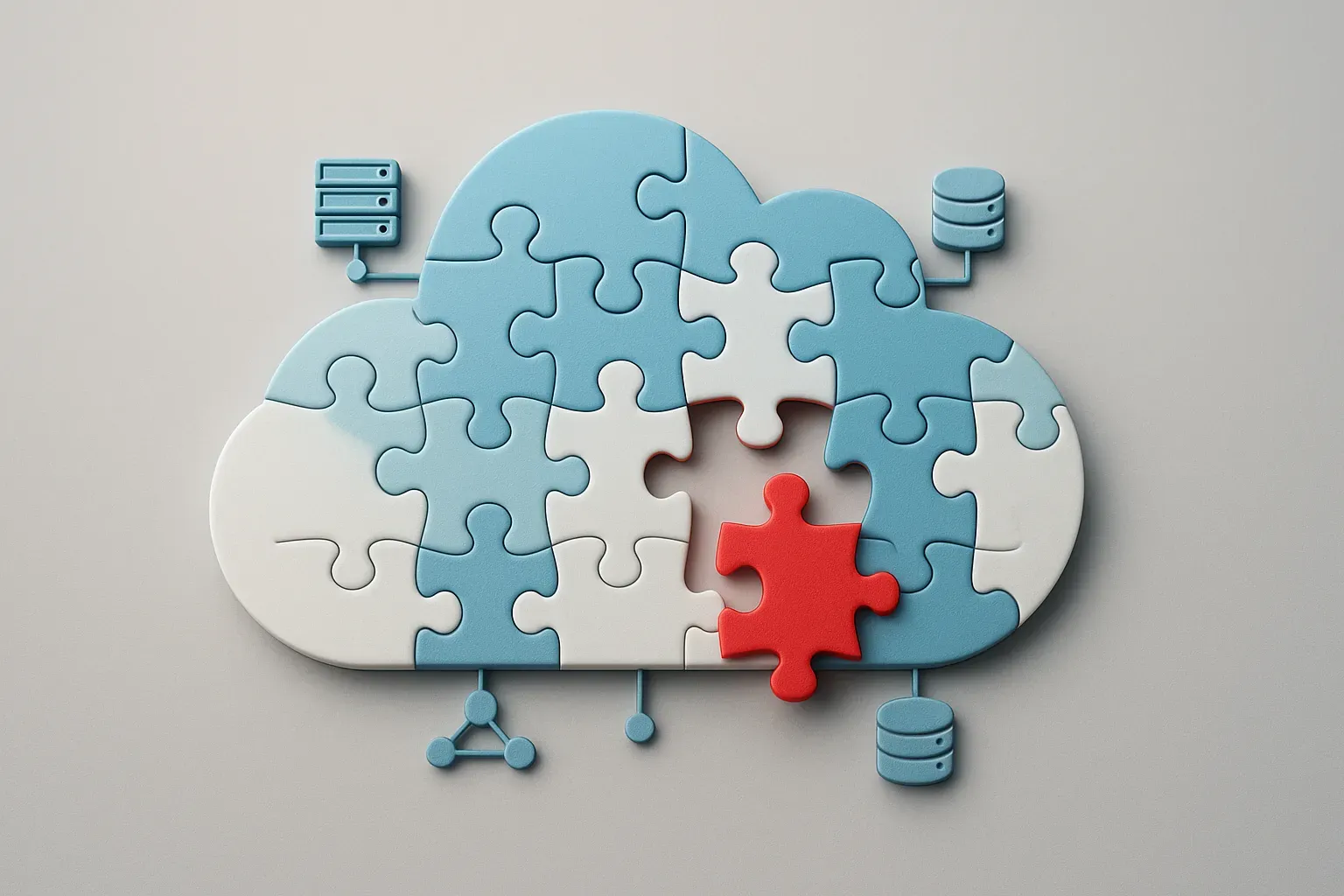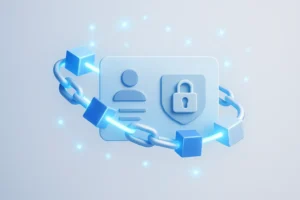In today’s workplace, personal data privacy has become a critical concern for employees and employers alike. This article presents expert-backed strategies for safeguarding personal information in professional settings. From building a security-conscious company culture to implementing practical data protection measures, these insights offer valuable guidance for maintaining privacy in the modern work environment.
- Build Security Awareness into Company Culture
- Prioritize Personal Privacy or Find New Workplace
- Question Necessity of Broad Data Sharing
- Be Intentional with Information Sharing and Storage
- Implement Role-Based Access Controls in Cloud Environments
- Apply Need-to-Know Basis for Data Access
- Avoid Storing Personal Data in Local Files
- Utilize End-to-End Encryption and Controlled Access
- Keep Work and Personal Emails Separate
- Enforce Role-Based Access Control and Regular Audits
- Design AI for Learners with Data Minimization
- Use Separate Devices for Work and Home
- Treat Internal Tools as Potentially Public
- Adhere to GDPR Principles for Client Trust
Build Security Awareness into Company Culture
We approach data privacy protection by implementing comprehensive training systems that build security awareness into our company culture. Regular monthly security sessions keep both longtime employees and new team members updated on evolving threats and best practices. These sessions combine real-world examples with practical guidance on identifying suspicious communications and protecting sensitive information.
Our learning management system provides on-demand courses covering various security topics, from password management to recognizing sophisticated phishing attempts. This approach ensures employees can refresh their knowledge whenever needed while providing structured learning paths for different team roles. The self-paced format allows team members to develop security skills relevant to their specific responsibilities.
Having a dedicated Business Systems Manager who monitors potential security threats provides an essential layer of protection beyond employee vigilance. This specialist regularly tests our systems, reviews suspicious activities, and implements technical safeguards that complement our training efforts. This combined approach of continuous education and technical oversight creates a security-conscious environment where protecting personal data becomes everyone’s responsibility rather than an afterthought.
 Aaron Whittaker
Aaron Whittaker
VP of Demand Generation & Marketing, Thrive Digital Marketing Agency
Prioritize Personal Privacy or Find New Workplace
Do not compromise your personal privacy at work, ever. If you have doubts about your personal privacy being protected in your work environment, find another work environment. A lack of emphasis on personal privacy reflects an overall lax culture and will create many other problems outside of privacy concerns. Their cybersecurity is undoubtedly subpar, and their processes are likely to be inefficient. You’ll be dealing with a very messy and unnecessarily complicated workplace, and constantly be worried about when a breach will happen where personal data is stolen.
 Bill Mann
Bill Mann
Privacy Expert, Cyber Insider
Question Necessity of Broad Data Sharing
My advice here is to always question the necessity of broad data sharing. You can always explore less intrusive alternatives that still achieve the intended outcome while respecting individual privacy preferences. For example, if HR wanted to share an Excel worksheet containing birthdays (PII) across the entire organization for sharing celebratory messages, the privacy concern is clear that not everyone may be happy about this broadcast. To solve this situation, an opt-in system where staff choose to have their birthday shared, or simply celebrating team birthdays within smaller units as an alternative, rather than to blanket ban this approach, could be implemented. Therefore, simplifying the approach is what makes solving certain problems easier to solve effectively.
 Harman Singh
Harman Singh
Director, Cyphere
Be Intentional with Information Sharing and Storage
I handle data privacy concerns at work by being careful and intentional with how I share and store information. I learned the importance of this when a colleague unintentionally sent sensitive client data to the wrong recipient.
It wasn’t malicious, but it caused a lot of unnecessary backtracking and headaches. That moment taught me how easy it is for things to go wrong if you’re not paying attention.
A personal lesson came when I saved work-related files on my personal cloud storage. I thought it would be more convenient, but when my account was compromised, I realized how careless that decision was.
Losing access to personal documents was frustrating enough, but knowing work files could have been exposed was a wake-up call. Since then, I’ve been strict about using secure company platforms and keeping personal and work data completely separate.
If I could offer a tip, it’s to slow down and think before sharing or saving anything. Mistakes often happen out of habit or rushing, and taking a moment to double-check can save you from unnecessary trouble.
 Erin Siemek
Erin Siemek
CEO, Forge Digital Marketing, LLC
Implement Role-Based Access Controls in Cloud Environments
Dealing with personal data privacy concerns in a modern workplace requires a robust, multi-layered approach that balances accessibility with protection. In my experience implementing Oracle NetSuite across diverse organizations, I’ve found that architecting role-based access controls within the cloud environment creates the ideal foundation. By structuring permissions based strictly on job functions, we ensure team members only access personal data genuinely relevant to their responsibilities. Last year, when rolling out a NetSuite solution for a rapidly growing financial services client, we mapped their organizational hierarchy to create granular permission sets that dramatically reduced unnecessary data exposure while maintaining operational efficiency.
The built-in security architecture of enterprise cloud platforms like NetSuite provides unprecedented protection when properly configured. I’ve witnessed firsthand how automatic security updates and policy refreshes eliminate the vulnerability gaps that plague traditional systems. It’s clear that companies that leverage continuous security enhancements on cloud platforms like NetSuite experience significantly fewer data breach incidents compared to those using legacy systems with manual update cycles. Moreover, by implementing encryption protocols and regular penetration testing alongside these automatic updates, we can create environments where personal data remains protected even as regulatory requirements evolve and new threats emerge.
My single most valuable tip for addressing data privacy concerns, though, comes down to universal implementation of multi-factor authentication across every level of the organization. When we initially proposed mandatory 2FA for a manufacturing client’s NetSuite implementation, we encountered significant resistance due to perceived workflow disruptions. However, after demonstrating how seamlessly modern 2FA integrates with NetSuite’s mobile application, adoption was swift and comprehensive. The results speak volumes—since implementing this solution, attempted unauthorized access incidents have been neutralized entirely, while compliance with GDPR and similar regulations has become substantially more straightforward. In today’s environment, this simple yet powerful authentication layer represents the most efficient privacy protection investment any organization can make.
 Tony Fidler
Tony Fidler
CEO, SANSA
Apply Need-to-Know Basis for Data Access
We treat access to personal data inside our company with the same caution we apply to client data, strictly on a need-to-know basis. That mindset shift made a real difference for us.
A common mistake I’ve seen in tech companies is letting too many people access internal systems “just in case.” We fixed that by applying role-based access, even across our HR and marketing tools. For instance, someone from HR can’t see salary details unless they’re directly working on compensation planning. Marketing doesn’t get access to hiring pipelines unless they’re involved in employer branding. It’s a simple rule, but it keeps things clean and safe.
We also created transparency in this process. Whenever access is limited, we explain why. It prevents confusion, creates confidence, and helps people to focus on data for which they are responsible.
This approach has made privacy less about policies and more about habits. And that’s what makes it stick.
 Vikrant Bhalodia
Vikrant Bhalodia
Head of Marketing & People Ops, WeblineIndia
Avoid Storing Personal Data in Local Files
One guiding principle I emphasize when navigating personal data privacy concerns, especially in a distributed, high-performance team like ours, is to avoid storing personal data in local files or downloads unless it’s absolutely necessary. It might feel more efficient in the moment, but over time, it creates gaps in security that are easy to miss and harder to fix. Coming from a legal background, I’m especially conscious of how quickly sensitive information can become difficult to track once it moves outside a centralized, secure system.
Local storage, particularly on personal or unmanaged devices, can easily slip through the cracks during transitions like employee offboarding or device replacements. Once data is stored outside approved systems, it’s harder to monitor, control, or securely delete. That’s why we’ve adopted a “clean system” culture, where all sensitive work data is stored only in vetted platforms with role-based access, encryption, and regular audits.
This approach isn’t about creating fear; it’s about building disciplined, thoughtful habits that reinforce trust and reduce unnecessary risk. When secure practices are embedded into daily workflows, they stop feeling like extra steps and start becoming second nature. In an environment like ours, where trust and confidentiality are paramount, not just internally, but also with the students and families we serve, privacy isn’t just a policy; it’s a reflection of our values. And strong systems are what allow us to uphold that commitment with consistency and confidence.
 Joel Butterly
Joel Butterly
CEO, InGenius Prep
Utilize End-to-End Encryption and Controlled Access
In the solar and renewable energy industry, handling sensitive project data—such as site surveys, energy consumption analytics, and client details—requires a strategic approach to data security and compliance. One critical method we use is end-to-end encryption and controlled access for project data.
We implement role-based access control (RBAC) to ensure that only authorized personnel can access specific project data. This minimizes exposure risks, particularly when working with drone-captured imagery, GPS mapping data, or customer energy profiles.
Why This Matters:
- Regulatory Compliance – Aligning with Canada’s PIPEDA and US data privacy laws, we ensure that personal and commercial energy data remains protected.
- Preventing Unauthorized Access – Engineers, technicians, and client managers only access the information they need for their role.
- Mitigating Cybersecurity Risks – By encrypting data transmissions and restricting access, we reduce the risk of breaches in cloud-based energy platforms.
One best practice we’ve implemented is routine privacy audits and ongoing employee training on cybersecurity risks. With renewable energy projects increasingly relying on IoT sensors, AI analytics, and cloud-based platforms, maintaining strict data protection measures ensures both compliance and client trust.
By proactively managing data access, encryption, and compliance, we safeguard our clients’ energy data while maintaining operational efficiency.
 Matthew Jaglowitz
Matthew Jaglowitz
CEO, Exactus Energy Inc.
Keep Work and Personal Emails Separate
Since my identity was stolen, I’ve become really cautious about protecting my personal information. One thing I’ve learned is to never use my work email for anything personal. I don’t want any of my private details or accounts linked to my job email, especially since work emails can sometimes be hacked or accessed by others. By keeping work and personal emails separate, I reduce the risk of someone gaining access to both sides of my life. It’s just one small step that helps me stay safer and gives me peace of mind in case anything happens again.
 Evan McCarthy
Evan McCarthy
President and CEO, SportingSmiles
Enforce Role-Based Access Control and Regular Audits
At our company, we take personal data privacy seriously and have implemented SOC 2 compliance to ensure all processes meet strict security, availability, and confidentiality standards. One key practice that helps us navigate privacy concerns is role-based access control.
Only team members who absolutely need access to specific data can view or handle it. This reduces unnecessary exposure and keeps sensitive information compartmentalized. We also conduct regular internal audits and employee training sessions to keep everyone aware of data privacy best practices. This creates a culture of responsibility and transparency around data use.
 Abhishek Shah
Abhishek Shah
Founder, Testlify
Design AI for Learners with Data Minimization
Personalization and privacy are not contradictory; they are a design issue. AI exists to work for the learner, not to observe them. This is why we apply data minimization and process information on-device where possible. We don’t need every single data point—just the right ones. For example, we focus on behavior patterns as opposed to personal identifiers to personalize learning pathways, which gives us strong signals without compromising identity.
We also implement consent-based personalization—learners get the opportunity to opt in to more customization if they are comfortable with it. This puts the user back in control, where they should be.
In short: trust isn’t a barrier to personalization—it’s its foundation. When learners feel they’re in control, they learn more deeply. AI can personalize without intruding. You just need to be intentional.
 Vasilii Kiselev
Vasilii Kiselev
CEO & Co-Founder, Legacy Online School
Use Separate Devices for Work and Home
One thing I do myself, and encourage all of my staff to do as well, is to have a separate set of devices for work and for home. This approach does so much to keep people’s personal data away from work-related exposure and also protects our business information from the vulnerabilities of personal devices.
 Jonathan Palley
Jonathan Palley
CEO, QR Codes Unlimited
Treat Internal Tools as Potentially Public
Treat every internal tool as if it’s accidentally public.
I learned this lesson the hard way when a colleague inadvertently shared customer addresses in a shared Slack channel, assuming it was “just us.” Six months later, screenshots from that channel appeared in a legal discovery request. It was a complete nightmare.
Now, my rule is simple: if I wouldn’t post it on a company blog, it doesn’t go in chat, comments, or casual documents. Sensitive information stays in secure systems, not convenience tools.
Most privacy breaches at work aren’t caused by hackers — they’re the result of habits. Design your workflow as if every message might someday leave your secure environment. Because one day, it might.
 Borets Stamenov
Borets Stamenov
Co-Founder & CEO, SeekFast
Adhere to GDPR Principles for Client Trust
I firmly believe that personal data privacy is not merely about avoiding legal issues; it’s about fostering long-term trust with clients and collaborators. In every project I undertake, I prioritize adherering to GDPR principles, even when working outside the EU. It’s not just about geographical location; it’s about respecting people’s data by default.
For instance, during brand audits or strategy intake, we apply data minimization techniques and only request information that is essential to the project. All forms include clear consent language, and files are shared using GDPR-compliant tools with access restricted to the project team. We ensure that no sensitive data is stored longer than necessary.
One piece of advice I always offer is to regularly review your forms, tools, and storage policies. If information isn’t necessary, don’t collect it. Following GDPR has not only protected our workflows but has also increased client confidence and improved our close rate with high-trust brands.
 Sahil Gandhi
Sahil Gandhi
Brand Strategist, Brand Professor













